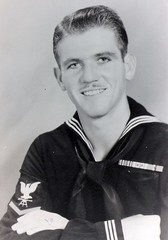Keeping The Legacy Alive
The USS FOOTE DD-511 was one of 175 Fletcher Class Destroyers built in less than a thousand days during WW-II. Her keel was laid down at the Bath Iron Works on April 14, 1942 and she was launched October 11, 1942. She was built in 180-days. In today’s world it would take longer than that to do an environmental impact study to get approval to build. After shakedown, from Casco Bay, Maine in zero weather to the warm waters of the Caribbean, she was placed in commission at the Charlestown Navy Yard on December 22, 1942 and decommissioned on April 18, 1946 and assigned to the reserve fleet. The FOOTE lived 3-years, 3-months and 27-days and traveled over 183,000 miles. I hope to keep the legacy alive by chronicling some of the events during this period.
She was stricken from the Navy records in October 1971 and sold on January 2, 1974 to Southern Scrap Material Co., Ltd. in New Orleans, LA for $139,377.60. Southern Scrap cut her up and sold the scrap metal to Japan to make Honda automobiles. This doesn’t seem to be a fitting end for a gallant fighting ship.
After rigorous training and drills from Maine to Guantanamo Bay, Cuba the FOOTE got her first assignment - to escort a convoy of merchant ships to Casablanca, French Morocco, Africa. But the real test for the ship and crew was to come in the Pacific.
May 1943 saw the FOOTE underway from Norfolk, VA to the south Pacific via the Panama Canal to Neumea, New Caledonia. There she operated in anti-submarine patrols and escort duty until September 1943 when she joined seven other Fletcher Class Destroyers to become Destroyer Squadron-23 (DesRon-23). This was the Squadron that would become known all over the Pacific as the “Little Beavers” under the command of Captain Arleigh “31-Knot” Burke. However, the FOOTE’S participation in the Solomons Campaign was cut short when she received a near fatal blow from a Japanese torpedo hit in the fantail during the Battle of Empress Augusta Bay off Bougainville on the night of November 2, 1943. This is the battle in which Captain Burke’s “Little Beavers” proved that fast destroyers operating in unison on their own could defeat a superior enemy force. The FOOTE lost 55-feet of her stern and 19 good men.
Managing to stay afloat, the FOOTE was towed home and repaired in San Pedro, CA. Completely rebuilt and back in fighting trim, the crew took the FOOTE, once again, to the Pacific to join the assault on the Philippines.
Off Tacloban, Leyte her crew saw the first evidence of Japan’s suicide air attacks - the dreaded “Kamikaze”. The crew was further tested in the first re-supply convoy to Mindoro and the shore bombardments at Lingayen Gulf, Luzon where allied forces landed to retake Manila.
When the “Little Beavers” reassembled and sailed for Okinawa she sailed into what was to be the greatest battle of all. The battle for Okinawa in the Ryuku Chain, at the southern end of Japan, where in their last ditch effort, the Japanese sent their Death Squadrons against the fleet and nearly turned the invasion into a disaster. The 82-day battle for Okinawa was a blood bath for the Navy. In this campaign the fleet suffered one-seventh of their WW-II casualties. The destroyers were especially vulnerable to the “Kamikaze” on their Radar Picket Stations 20 to 45 miles offshore. The FOOTE’S luck held and after several close calls, the day finally came when the Japanese requested surrender terms.
Her duty well done, the USS FOOTE DD-511 raised her anchor for the last time in foreign waters and with Homeward Bound Pennants flying, sailed for home on September 10, 1945.
She entered New York Harbor on October 17, 1945 in Victory Parade with 56 other war ships of the Pacific Fleet. After the Navy Day review by President Truman, the process of making civilians out of these warriors began and they scattered to all corners of the United States - they would change the fabric of society of generations.
This is a cameo history of the USS FOOTE DD-511 and, as time and circumstances permit, I hope to document some interesting and informative events that molded the lives of the crew whose average age was 19.7 years.


5 Comments:
Dad good post, I look forward to many more in the next few weeks.
For some reason, my first comment didn't show up - but I said that you put such excitement into the adventures of the Fletcher class destroyers that it makes me want to get out my tapes of the "Victory at Sea" series and watch all of them. I believe I'll do just that when I retire later this year!
Looks good so far Papa!
Rog--I have seen so much of your "Foot Notes" that I feel like I was actually there!
you're my Number One WWII hero, and I honored and previliged to know you.
Anchors aweigh!
God Bless You Mr.Rogers. You have brought my father back to us for a brief moment. Glenda Reed, Maple Valley, Wa
Post a Comment
<< Home